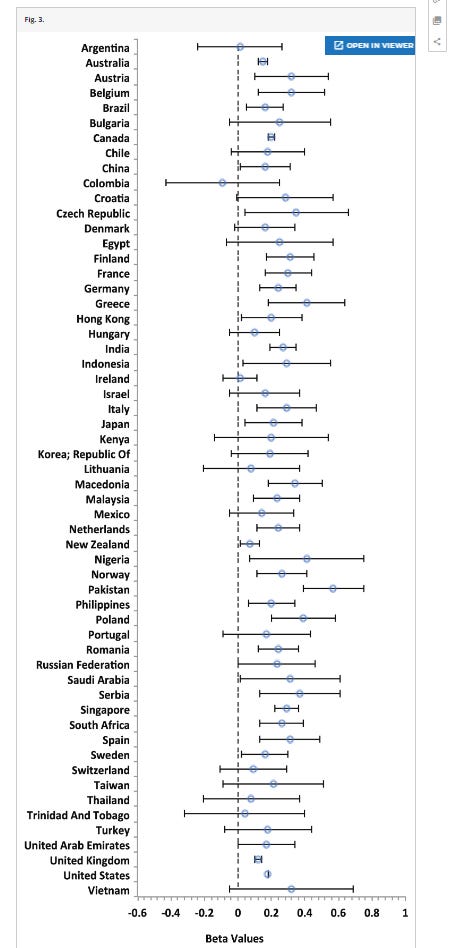Sex differences. It's a topic that's been debated, dissected, and often dismissed. But what if the 'truths' we've been spoon-fed by parents, teachers, cantors, and even our favorite authors and podcasters are off the mark? What if the reality is far more intricate, nuanced, and controversial than we've been led to believe?
In this article, we'll challenge the dominant cultural ideology by delving into the science of sex differences, scrutinizing stereotypes, and questioning the 'common knowledge' that has shaped our understanding.
We'll explore groundbreaking research, confront uncomfortable truths, and perhaps shatter a few misconceptions along the way.
Why does this matter? Why should we care about sex differences? Because understanding these differences is crucial to understanding ourselves and each other. It impacts everything from our personal relationships to our societal structures. It's not just about men and women - it's about society and the next generation. Let's open our minds to new perspectives with more legitimacy.
Physical Strength
The primary controversial area in society right now resides in sports. Someone possessing male hormones until the age of 18 and then enters into women's sports. Men are at a major statistical advantage in terms of upper body strength, power, tension, coordination, balance, hand size, grip, physical speed, muscle recovery, etc. It can be quantified as simple as men completing around 40% more push ups to failure, and showing a similar sized difference in grip strength compared with women.
In fact, there is promising research suggesting that women experience greater anxiety than men and part of the reason for this is their lower physical formidability and thus, sense of safety in the face of threats.
Common Ground Across Borders
Move beyond athletic activity, and there are a few additional meaningful differences between men and women. Consider the ability to understand what another person is thinking and feeling - known as "theory of mind." In a study of over 312,739 men and women from the span of 16 year old adolescents to 70 year older adults, women showed an advantage in this mental and social skill in 36 of 57 countries observed. Most importantly, there was not a single country where men outperformed women!
The effect of sex on the Theory of Mind Test in each of 57 countries is represented by beta values. In simpler terms, these values indicate the degree of change in strength when moving from one sex to the other. The lines represent 95% credible intervals. Scores above 0 indicate a female advantage, while beta values below 0 suggest a male advantage. Interestingly, 36 countries have a lower interval bound ≥ 0, indicating a female advantage, while no countries have a higher interval bound ≤ 0, suggesting no male advantage. While beta values offer a useful way to quantify relationships, they don't provide a complete picture of the relationship between strength and sex.
The Media's Misrepresentation of Sex Differences
The media industry thrives on emphasizing sex differences. Books like "Men are from Mars, Women are from Venus," "Act Like a Lady, Think Like a Man," and "Why Men Lie and Women Cry" are prime examples. These works, however, often lack scientific grounding and reflect a distorted reality. It's worth questioning why we expect significant differences between men and women in psychological aspects beyond traditional dating and mating norms.
The Reality of Sex Differences
Dr. Janet Hyde took a bold step to challenge these assumptions by reviewing existing meta-analyses. Her findings reveal a stark contrast to popular culture and everyday conversations. The reality is that women and men are far more similar than we realize. This lack of differences is intriguing, given our societal obsession with assuming them.
Let's explore the ways men and women are psychologically similar. In the tables below, positive d scores indicate a male advantage, and negative d scores indicate a female advantage. Asterisks denote the use of large national samples. As a rule-of-thumb, d scores less than .10 are considered negligible, scores less than .35 are small, scores between .36 and .65 are moderate, and scores above .66 are large.
If you examine these d scores, which measure the magnitude of sex differences, you'll quickly notice something. Nearly every outcome, from mathematical skills to happiness to a preference for challenging jobs, shows small to non-existent sex differences. Men are quite similar to women.
The Unpopular Truth
The absence of sex differences doesn't make for sensational headlines or bestselling books. In fact, pointing out that people's intuitions, shaped by cultural norms, are incorrect often leads to unnecessary friction.
This brings us to a crucial question: Do you want to understand reality as it is.
If the scientific evidence from our deep dive into sex differences and similarities hasn't fully resonated, let's switch gears.
Below, I share a thought-provoking exercise. This bonus content is a little something extra for paid subscribers.
Now is the time to upgrade - get a 30% discount until Hanukkah Man packs up his dreidels on 12/15/23! Click here:
Dr. Todd B. Kashdan is an author of several books including The Upside of Your Dark Side (Penguin) and The Art of Insubordination: How to Dissent and Defy Effectively (Avery/Penguin) and Professor of Psychology and Leader of The Well-Being Laboratory at George Mason University. Connect with me on: Twitter or Facebook or Linkedin or Instagram
Now, let's get back to that intriguing exercise. Use it in your classrooms to stimulate thought-provoking conversation on sex and gender. Heck, bring it up during a lull on your next romantic date. Let’s gooooooooo…













